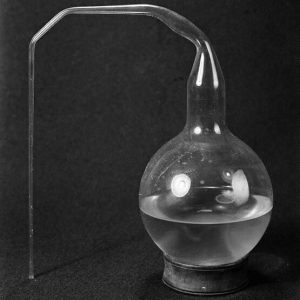Biogenesis means making new living things. More specifically, it is the theory that living things only come from other living things through reproduction. Abiogenesis, sometimes called spontaneous generation, means life coming from non-living things.
Comparison Chart
| Biogenesis | Abiogenesis | |
|---|---|---|
| Examples | Cell division; flies developing from larvae; baby mice created by adult males and females | Spontaneous generation |
| Experimental Evidence | Yes, seen in the lab | No, never observed |
| Time period | Mid-19th century to present | Early Greeks to mid-19th century |
| Originator of the theory | Louis Pasteur | Aristotle |
| Theory states that life comes from | Living things | Non-living things |
Biogenesis
Antoni van Leeuwenhoek’s work to improve microscope lenses in the mid-1600s made it possible to see the living organisms in a drop of pond water, furthering the understanding about where life comes from. In 1864, Louis Pasteur conducted the first experiment that showed conclusively that living things come from other living things. Pasteur created a flask that had a “swan’s neck” shape. This design allowed the atmosphere to enter the flask but prevented dust, bacteria and other particles from entering. He boiled broth to sterilize it and divided it into two swan-necked flasks. As time went on, Pasteur observed that nothing was growing in either flask. He then removed the swan neck from one of the flasks. After several hours, a haze developed in the broth, indicating that microbes were growing and multiplying. The earliest forms of life on Earth were microorganisms, which first appeared somewhere between 3.8 billion and 4.3 billion years ago. These microorganisms may have formed in hot thermal vents in the oceans.
The image above shows a swan-necked flask used by Louis Pasteur in his famous experiment that helped disprove the theory of spontaneous generation. The unique design allowed the atmosphere to enter the flask but prevented particles from falling into it.
Abiogenesis
Even before the time of the ancient Greeks, people thought that mice came from straw, that rotting meat would transform directly into flies, and that fleas were created from sand. Spontaneous generation is the term that was used to describe the creation of life in this way. The Greek scientist and philosopher Aristotle (384-322 BCE) was one of the earliest scientists to describe a theory for abiogenesis, in which all life arose directly from different combinations of earth, wind, fire and water. Although abiogenesis has never been observed in the lab, some mechanism involving it was likely involved in creating the simpler molecules (lipids, carbohydrates, proteins, etc.) that were part of the beginning of life on Earth. One of the challenges in developing scientific models around abiogenesis is explaining how molecules formed into cells which became self-replicating. One theory involves protocells, which are organized collections of lipids that form into a spherical shape.
References
- Biogenesis. (n.d.). In Wikipedia. Retrieved May 23, 2017, from https://en.wikipedia.org/wiki/Biogenesis.
- Abiogenesis. (2017, May 23). In Encyclopedia Britannica online. Retrieved from https://www.britannica.com/science/abiogenesis.

